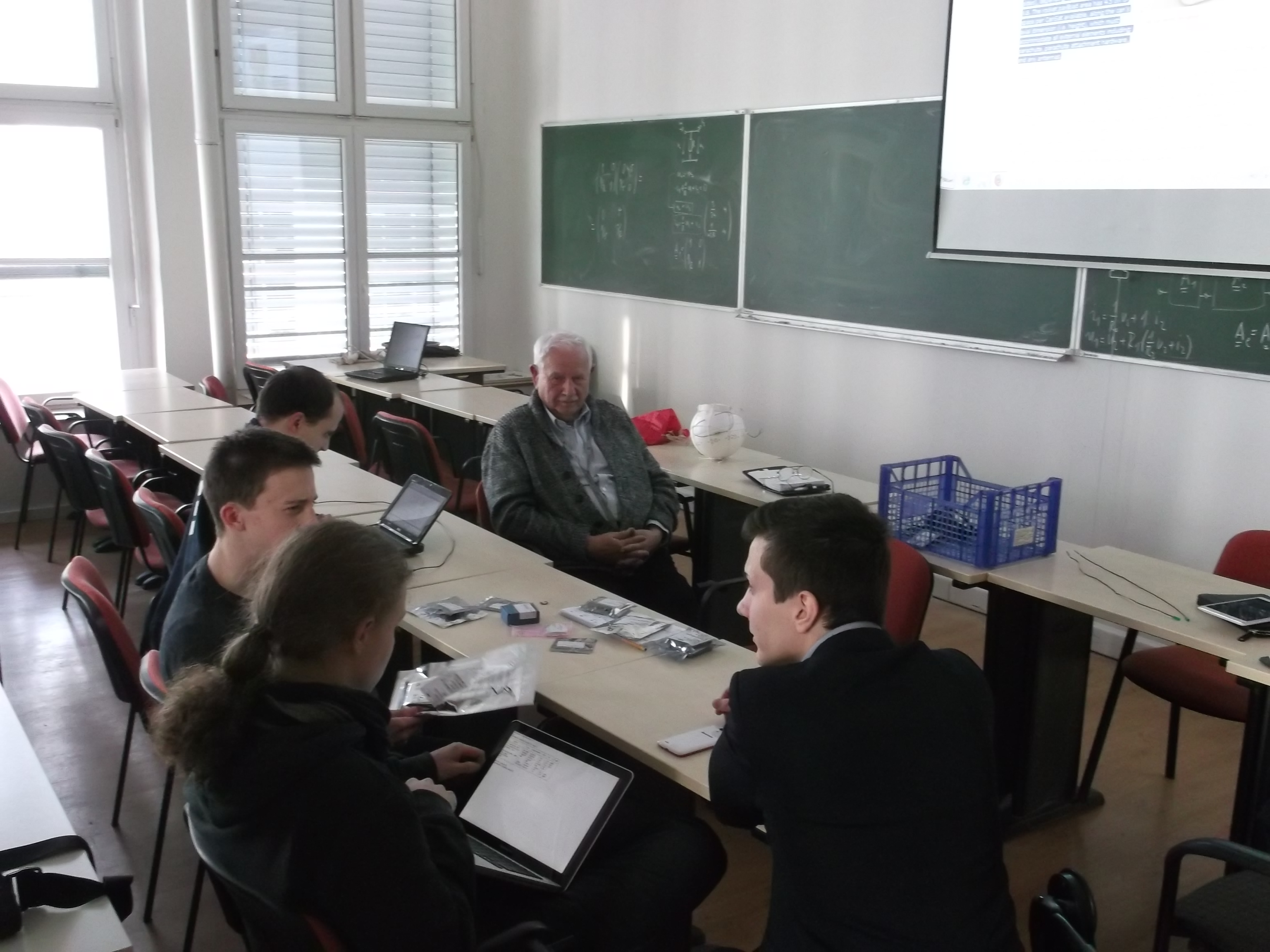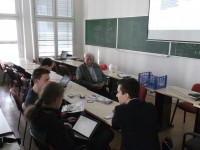On this meeting we moved forward a lot with the planning of future tests and targeted landing.
The discussion started with the selection criteria of the accompanying teacher.
The most important aspect is to speak well in English and to understand the CanSat task and rules sufficiently. At present, our physics teacher and our form master are likely to be in this position, if for any reason none of these teachers can take this role, Levente Dudás will be happy to help us.
The next topic is the parachute, which should decelerate the CanSat after the deployment from the rocket, during the fall, to a speed of 8 to 10 meters per second. The parachute is either a self-made or ready-made construct. Viktor Józsa gave paragliding design advices to András Illyés before the meeting.
The parachute will also have to be tested at higher altitudes, so we invited Gábor Vásárhelyi from the Department of Biological Physics of ELTE University, who works, among other things, with drones. Testing with drones beyond testing the parachute is also good for studying the behavior of CanSat during fall and landing.
Gábor suggests that the 300-350 grams of CanSat would be lifted to 100 m high by the drone and the dropped down. This altitude has been chosen, because flying higher needs more permissions. At climb, the parachute and CanSat would be securely fastened to the drone with a plastic thread, which an electronically controlled fireworks’ igniter would burn at the desired height. This would have a remote control.
We have acquired the most sensors and ICs that will be needed for CanSat, based on the recommendations of Levente Dudás. Only CSS811 could not be obtained because it is only provided on a developer panel (breakout board). Benedek Tomka sends the material list after the meeting for us.

Domonkos Dessewffy, based on existing circuit diagrams during the weekend, prepares PCB plans – supported by the advices of Levente Dudás. So the panels can be manufactured before the long weekend, which can be completed by 22nd March.
Levente told us his opinion about the antennas. The location of the GPS antenna will be at the top of CanSat. The positioning of the communication antenna is more problematic. According to the specifications, a total of 4,5 cm space above and below CanSat can be used for the parachute and antenna. This space hopefully is sufficient, the task is to position the antenna to create the appropriate radiation characteristic to ensure the reception of telemetry data.
On Saturday, March 10, András Illyés meets the teachers of the GAMF Department of Automotive Technologies to get advices about the design of the chassis. This is likely to be made of fiberglass instead of the previously planned carbon fiber, as it would not be transparent for the radio. Our helpers here are also familiar with model flying, so they will probably be able to help us with the targeted landing.
The last topic was to start our website as soon as possible. The website has to be structured and look good, it “just” needs to be filled up with content, with the technical details Emil Viktor Hödl offered his help.
The next CanSat meeting will on 22nd March.

here! Good luck for the next!
Thank you, Henry! 🙂
With thanks! Valuable information!
Thanks a lot!